|
Listen to this post
|
September 13, 2022 (Tuesday). Woke up about 6 a.m. The ship had stopped before 1 a.m. We had traveled roughly 30 miles overnight. We started the day in North Sandy Cove (adjacent to Puffin Island). Took an initial walk about the sun deck around 6:15 a.m. and we heard wolf calls.
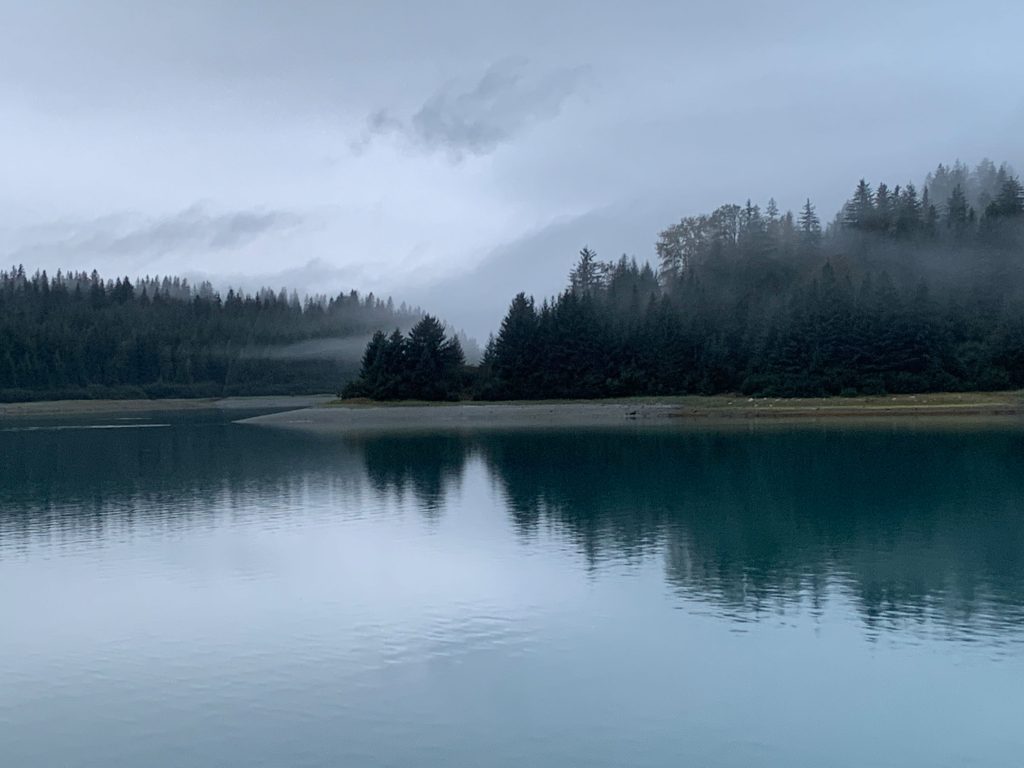
I learned a new term (among many on this trip) – shoilet (for our combination shower/ toilet). Very tight space. Learned quickly that the toilet paper is not covered completely unless the shower curtain is quite secure. Lesson learned *grin*
We took a skiff for an “eco meander” on the tidal flat. This is what the tidal flat looked like during our meander.
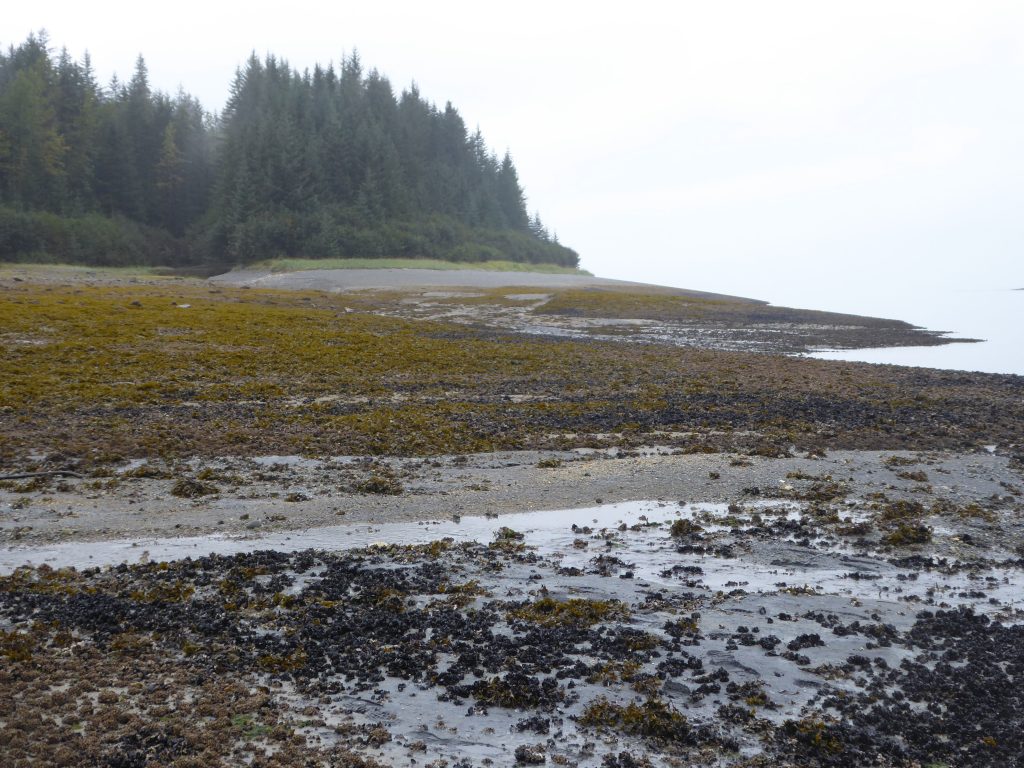
We encountered a number of different plants and animals in the inter tidal zone. Examples included: barnacles, butter clams (larger clams), limpets, prickleback fish, bull kelp, isopods, ribbon worms, hermit crabs, and blue mussels. Here are a couple photos.
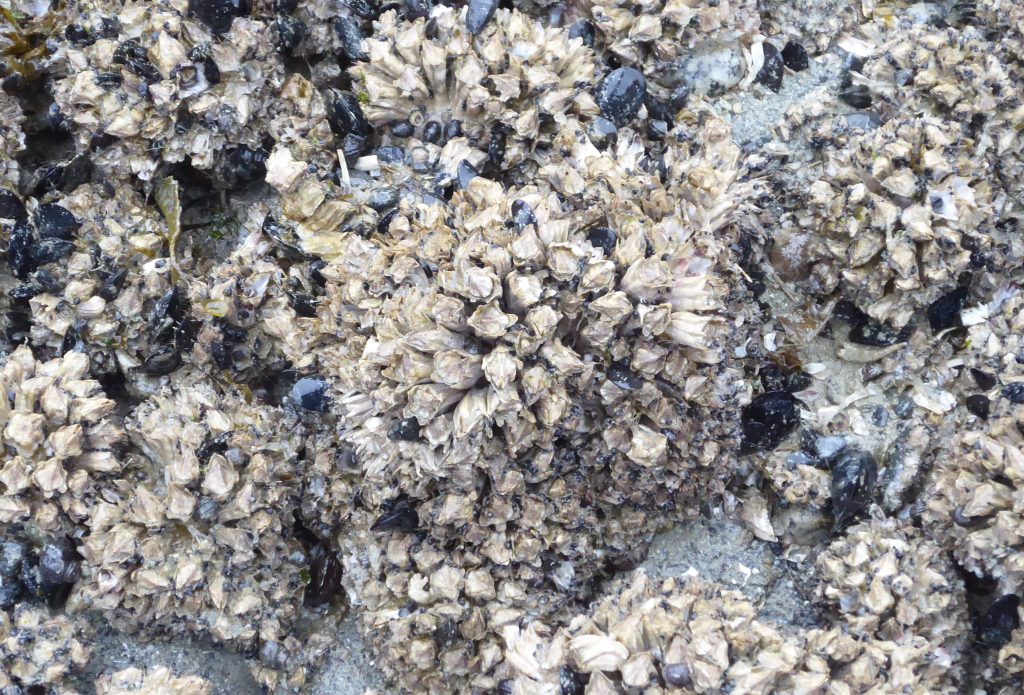
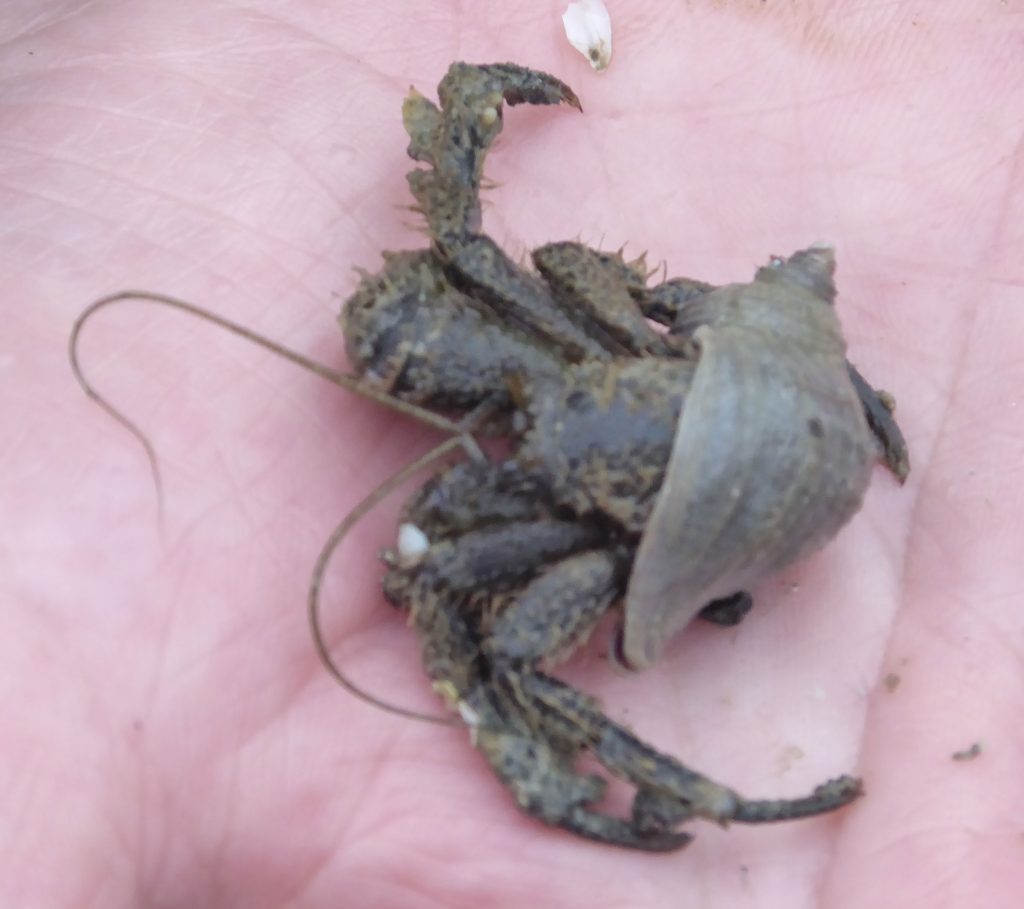
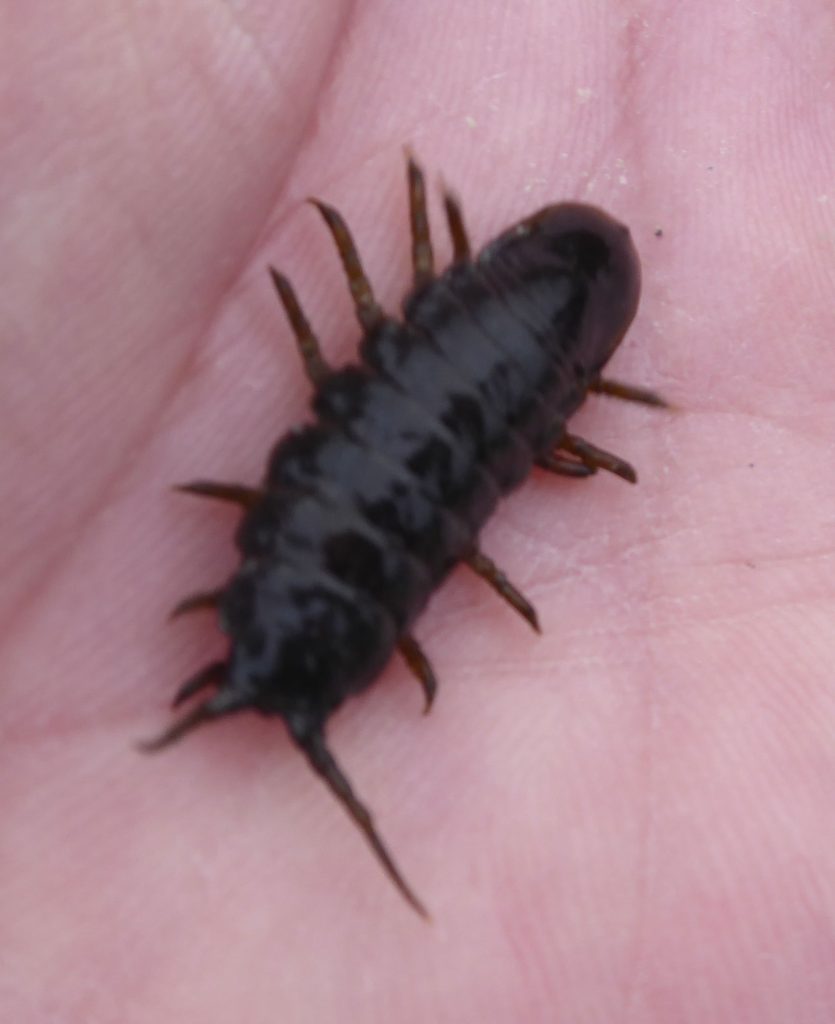
We learned that bull kelp is kept afloat by ball floats (part of the plant structure). They contain carbon monoxide. Yep, the stuff that kills if inhaled in quantity.
We lifted anchor and started heading south around noon (local time). We had a nice lunch with a couple from Arkansas (Marge and Bill). About 1:30 we passed Marble Island. We saw Stellar Sea Lions (in abundance), puffins, tufted puffins, and cormorants. Here are a few photos I took. The seas were very choppy.
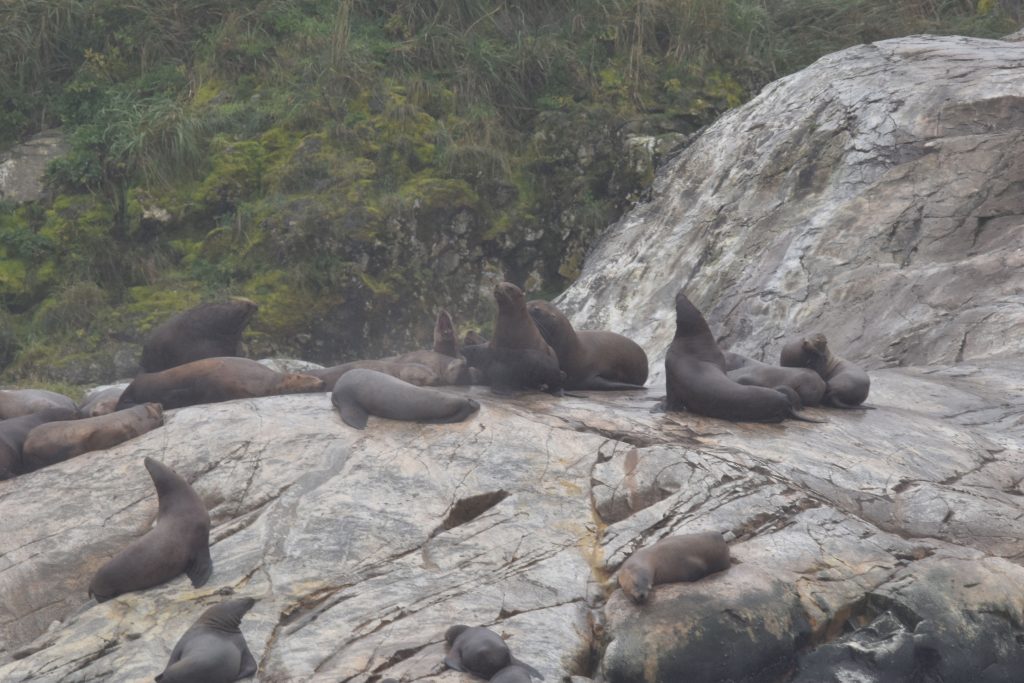
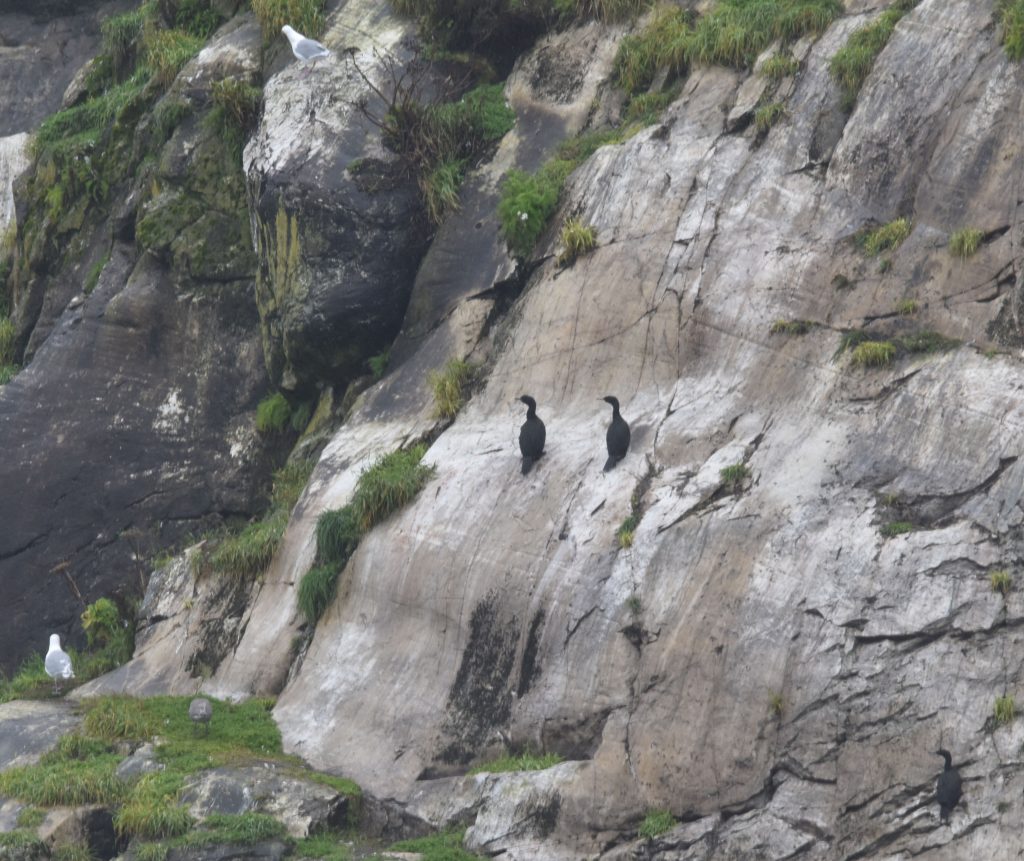
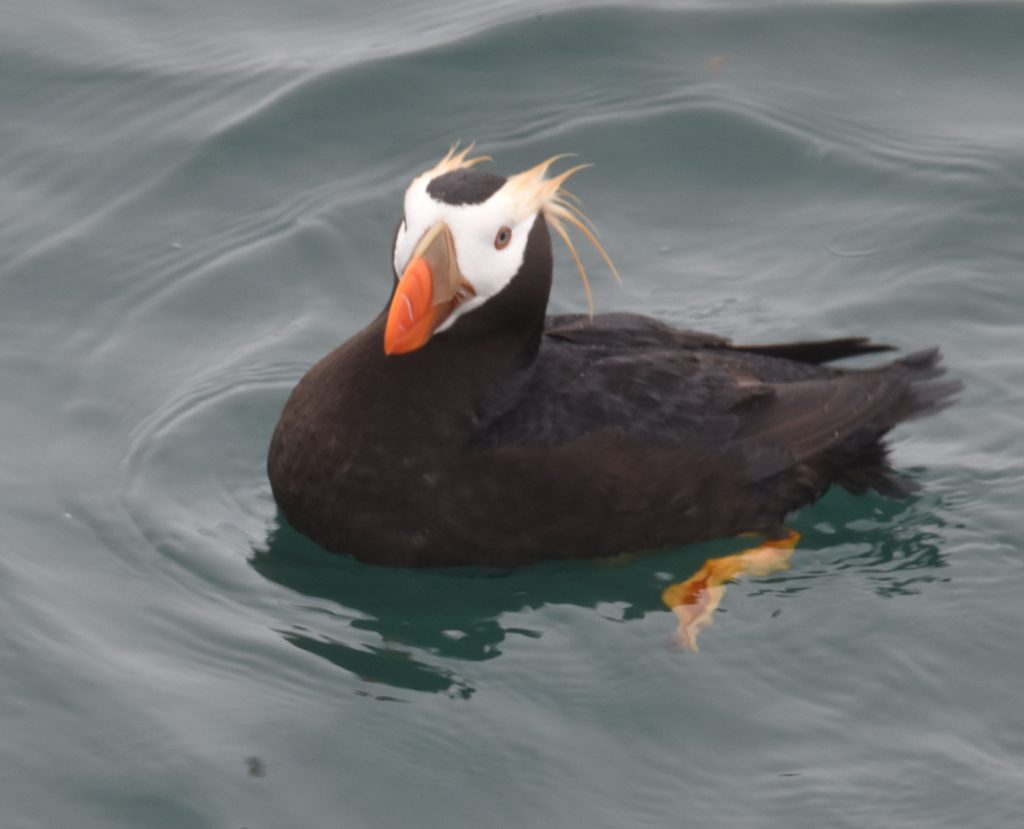
Did I mention we also saw humpback whales. Here is the tail as one dives deep. I uploaded this photo to the Happy Whale site (which uses AI “facial recognition” to identify specific whales).
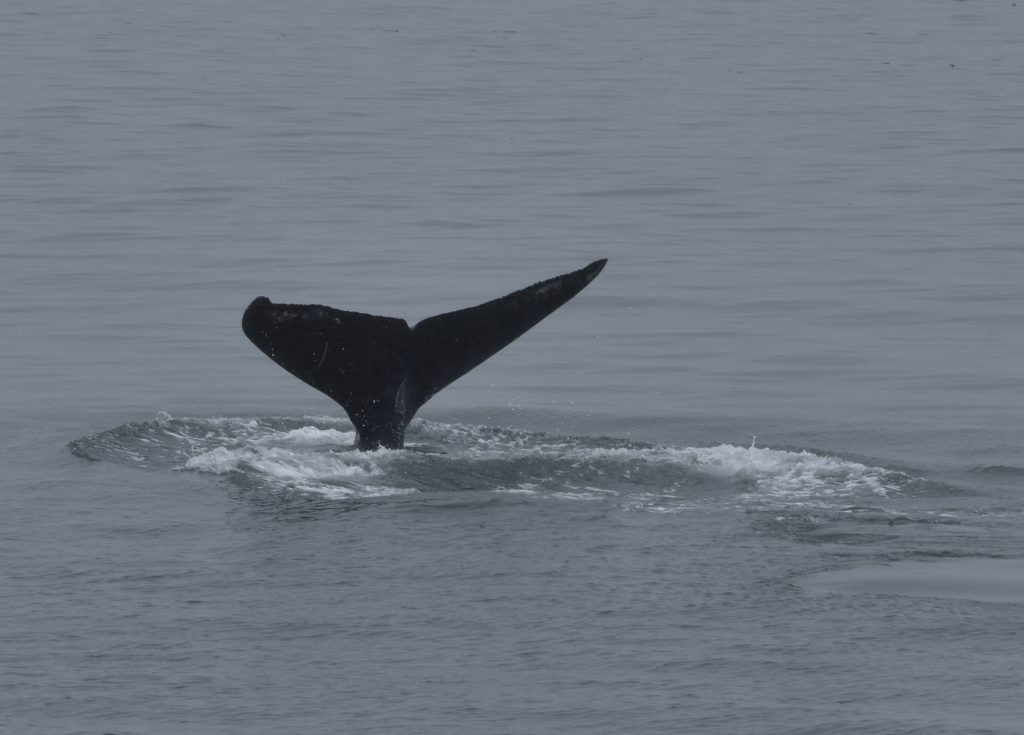
Later, Rachel (one of our guides), did a presentation on humpback whales. They can be up to 50 feet long and weigh 90,000 pounds. They are filter feeders using the baleen (made of keratin) to feed. There are 200 to 400 plates in their mouth. They have a double blow hole. I learned a new term – rorqual – meaning they have ventral pleats which they can expand to gulp large quantities of sea water. They filter this water to extract their food. They typically cruise at about 9 knots.
As we cruised south out of Glacier Bay National Park, I was able to spend a little time on the bridge. Adrienne was piloting the ship. Got a quick overview of the different thrusters and ways to steer ship. There are two main thrusters. In addition to the wheel. There are joystick controls.
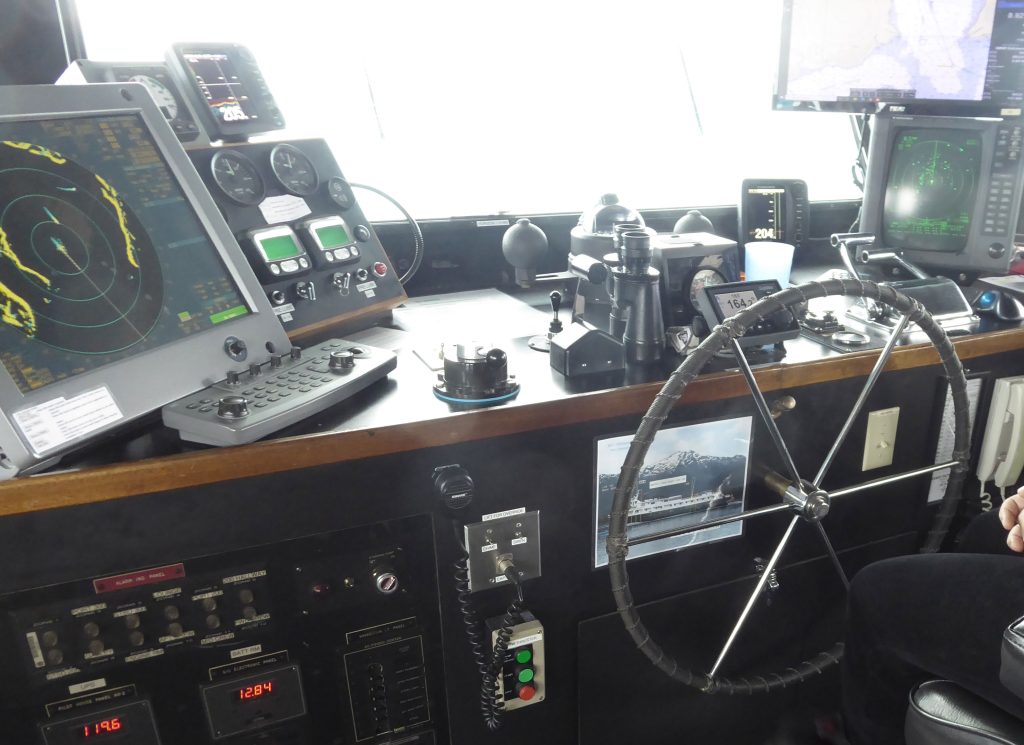
Altogether another fantastic day in south east Alaska. I will post details of our next day (where we visited Sitka) soon.


